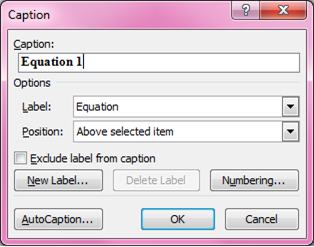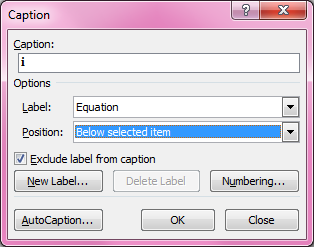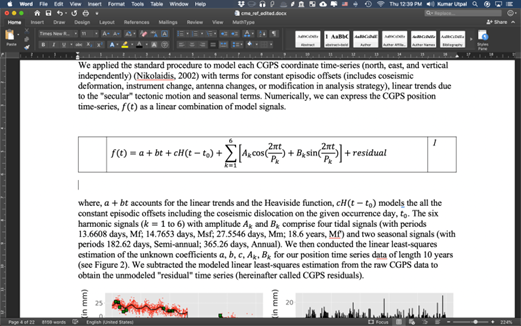Did you know that it is possible to add equation numbering to your Word documents? Read on to discover the different ways of numbering equations in Microsoft Word.
When making a technical or scientific report, you will come across a situation where you will be encoding a mathematical equation on the document. If only Algebra is involved, then the keyboard can be enough. However, when other symbols are needed to be displayed, you will have to use the ‘Equation’ feature.

In Microsoft Word, you can easily make summations, trigonometric functions, and more, and you can incorporate them into the rest of the text on your document. But on higher report-making like experiments or thesis, numbering the equations is quite an important detail.
How to Create an Equation?
Creating an equation in Microsoft Word is easy. You can either access it through a short-cut key, ‘Alt + =,’ or use the mouse and choose the ‘Insert’ tab located at the top toolbars of the Microsoft Word and select ‘Equation.
You can choose any form that is needed. The encoding and making it uniform to the rest of the text depend on your intuition and approach. It is similar to having a ‘text field’ inside a document.
Why Number Equations?
Numbering equations are mostly demanded from formal scientific reports. They are needed to be done like that to map identify the equations, and on the flow of document writing, it will be easier to call the ‘label’ rather than to repeat encoding the whole equation again.
How to Number Equations?
There can be two ways of numbering equations. One is a simple way, while the other is the formal way, usually done by most textbooks and technical documents.
Simple Way
To illustrate the numbering of equations, let us assume that several equations are already encoded.
- When the equations are already made, highlight them all.
- Hover the mouse pointer to the ‘Home’ tab located at the top toolbars of the MS Word.
- Look for the ‘Numbering.’ Select the appropriate style you want, and when done, click on it.

Formal Way
The formal way is having the numbering label usually on the right side (if you are looking at the screen) of the equation. To achieve this form, this may take a few tricks. In this procedure, let’s assume that the equations are already made.
- Highlight all equations needed to be labeled on a particular section of the document.
- Hover the mouse pointer to the ‘Reference’ tab located at the top toolbars. Then look for ‘Insert Caption’ and click on it.
- A dialog box will appear. You can type what will be the caption of each equation. The options for the ‘position’ are only above and below the selected item. However, what we need is to make it appear at the right.

- You can make your labelling by clicking on ‘New Label.’ For proceeding, after you finalize the caption appearance, make the position ‘below the selected item.’ Then click ‘OK.

- After being satisfied with the caption, we will be inserting a table with three columns. The rows will depend on how many equations on that particular document section are there. With regards to the column width, make sure the right-most and the left-most column are smaller where they are a bit enough for the size of the caption.
- When the table is finished, transfer the equation to the center column. The caption will be transferred to either the side columns, but we will choose the right-most column for this discussion.

- You can adjust the alignment and make the font between the two sets of texts uniformed. After finalizing its appearance, highlight the table and make it ‘borderless.
Summary: Number equations in Microsoft Word
- Place the cursor at the spot in the document where you want to insert the equation.
- Click Insert and then click Object.
- The Insert Object dialog box appears.
- Click Microsoft Equation 3.0 and then click OK to display the equation editor.
- Enter an equation in the Equation Editor, just as you would write it on paper and then click Insert Equation.
- Word displays a special character (∞) where you entered the equation.
Conclusion
The steps are generally easy with a few equations. But when you’re making a thesis or a textbook, repeating the procedures can be an obstacle. Thankfully, there are the functions ‘Copy’ and ‘Paste’!